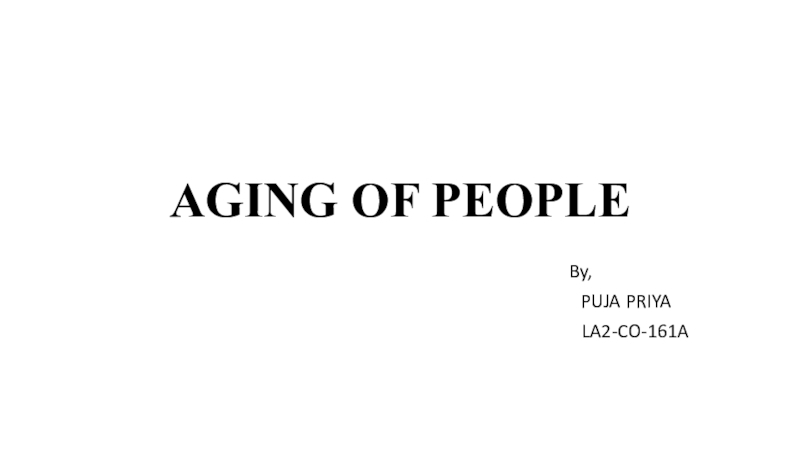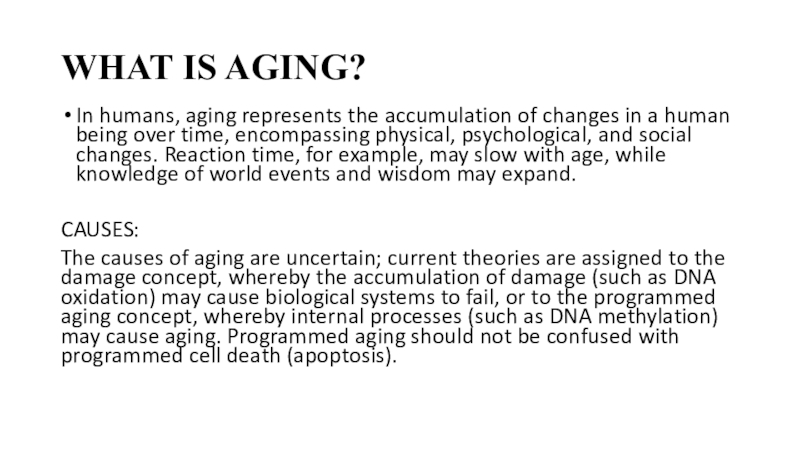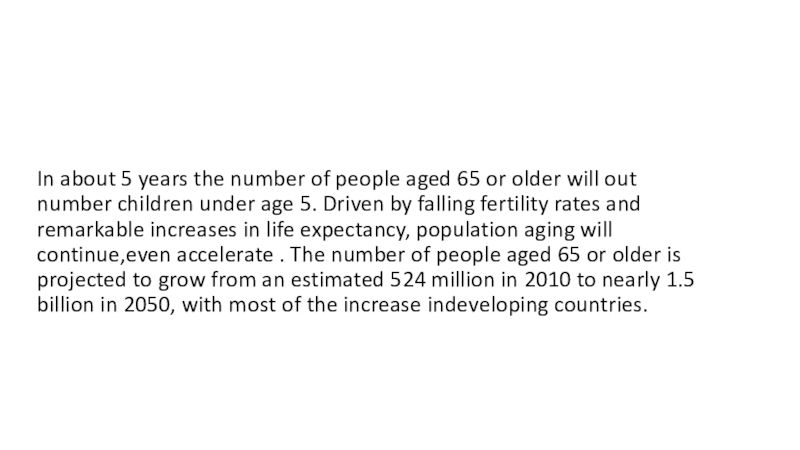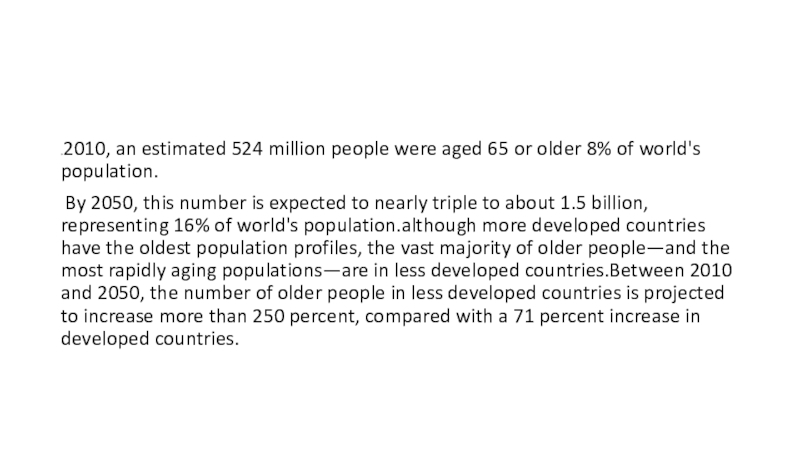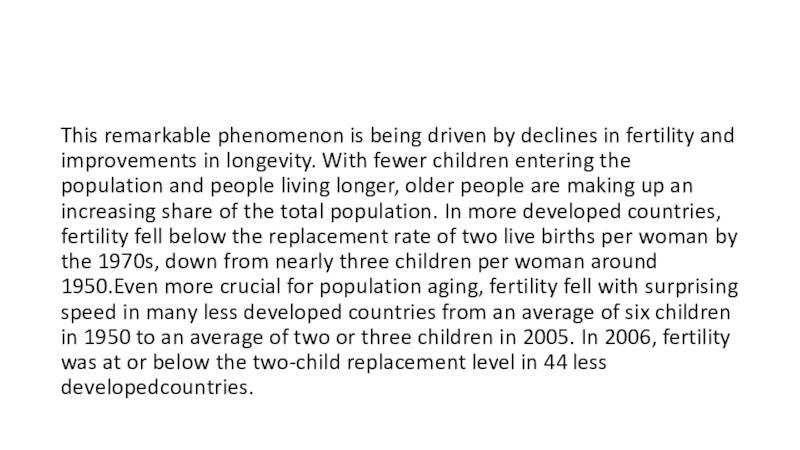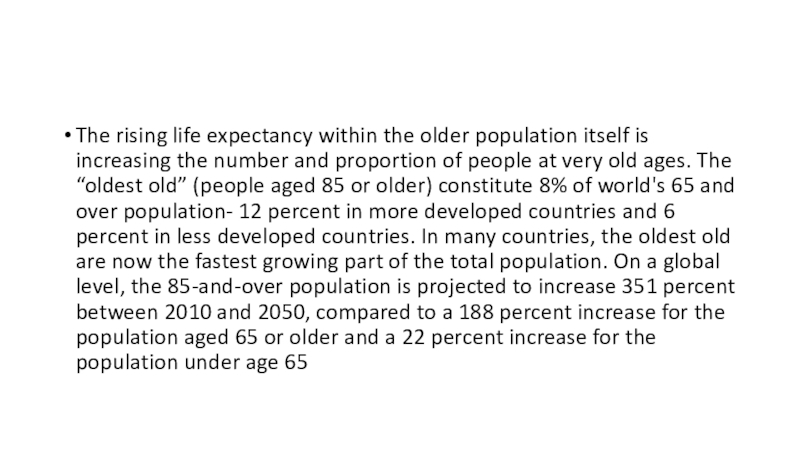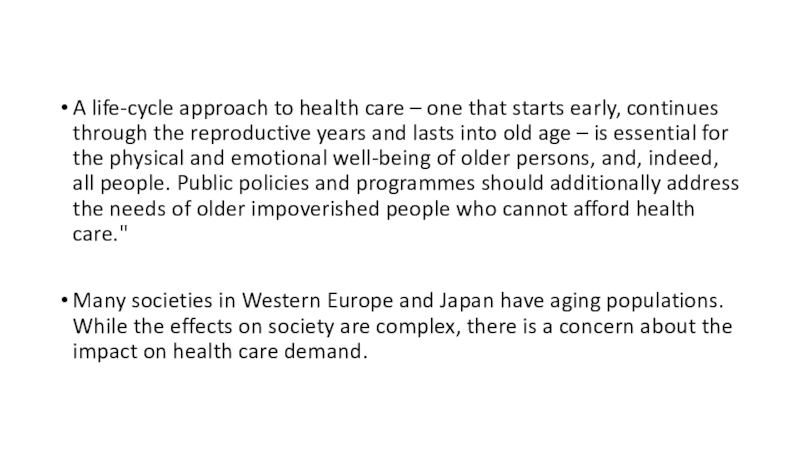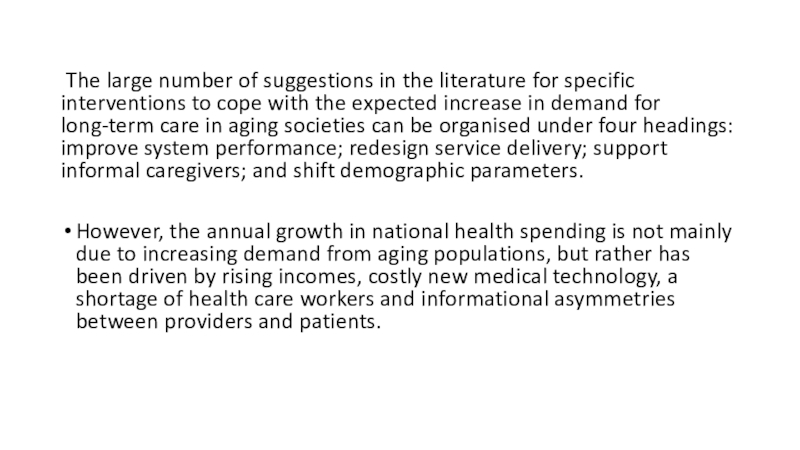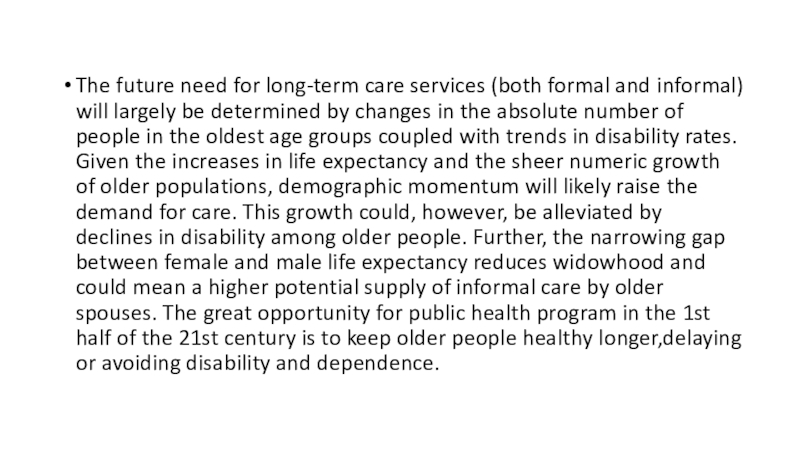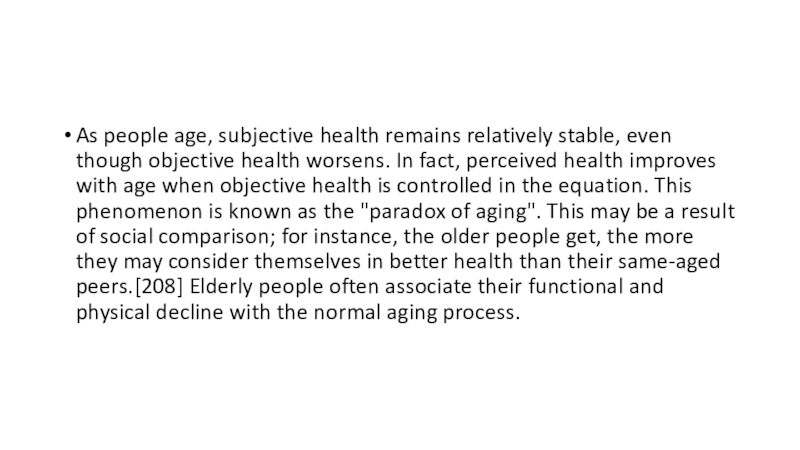Разделы презентаций
- Разное
- Английский язык
- Астрономия
- Алгебра
- Биология
- География
- Геометрия
- Детские презентации
- Информатика
- История
- Литература
- Математика
- Медицина
- Менеджмент
- Музыка
- МХК
- Немецкий язык
- ОБЖ
- Обществознание
- Окружающий мир
- Педагогика
- Русский язык
- Технология
- Физика
- Философия
- Химия
- Шаблоны, картинки для презентаций
- Экология
- Экономика
- Юриспруденция
AGING OF PEOPLE
Содержание
- 1. AGING OF PEOPLE
- 2. WHAT IS AGING?In humans, aging represents the
- 3. In about 5 years the number of
- 4. In 2010, an estimated 524 million people
- 5. This remarkable phenomenon is being driven by
- 6. The rising life expectancy within the older
- 7. A life-cycle approach to health care –
- 8. The large number of suggestions in
- 9. The future need for long-term care services
- 10. As people age, subjective health remains relatively
- 11. Скачать презентанцию
WHAT IS AGING?In humans, aging represents the accumulation of changes in a human being over time, encompassing physical, psychological, and social changes. Reaction time, for example, may slow with age, while
Слайды и текст этой презентации
Слайд 2WHAT IS AGING?
In humans, aging represents the accumulation of changes
in a human being over time, encompassing physical, psychological, and
social changes. Reaction time, for example, may slow with age, while knowledge of world events and wisdom may expand.CAUSES:
The causes of aging are uncertain; current theories are assigned to the damage concept, whereby the accumulation of damage (such as DNA oxidation) may cause biological systems to fail, or to the programmed aging concept, whereby internal processes (such as DNA methylation) may cause aging. Programmed aging should not be confused with programmed cell death (apoptosis).
Слайд 3
In about 5 years the number of people aged 65
or older will out number children under age 5. Driven
by falling fertility rates and remarkable increases in life expectancy, population aging will continue,even accelerate . The number of people aged 65 or older is projected to grow from an estimated 524 million in 2010 to nearly 1.5 billion in 2050, with most of the increase indeveloping countries.Слайд 4In 2010, an estimated 524 million people were aged 65
or older 8% of world's population.
By 2050, this number
is expected to nearly triple to about 1.5 billion, representing 16% of world's population.although more developed countries have the oldest population profiles, the vast majority of older people—and the most rapidly aging populations—are in less developed countries.Between 2010 and 2050, the number of older people in less developed countries is projected to increase more than 250 percent, compared with a 71 percent increase in developed countries.Слайд 5This remarkable phenomenon is being driven by declines in fertility
and improvements in longevity. With fewer children entering the population
and people living longer, older people are making up an increasing share of the total population. In more developed countries, fertility fell below the replacement rate of two live births per woman by the 1970s, down from nearly three children per woman around 1950.Even more crucial for population aging, fertility fell with surprising speed in many less developed countries from an average of six children in 1950 to an average of two or three children in 2005. In 2006, fertility was at or below the two-child replacement level in 44 less developedcountries.Слайд 6The rising life expectancy within the older population itself is
increasing the number and proportion of people at very old
ages. The “oldest old” (people aged 85 or older) constitute 8% of world's 65 and over population- 12 percent in more developed countries and 6 percent in less developed countries. In many countries, the oldest old are now the fastest growing part of the total population. On a global level, the 85-and-over population is projected to increase 351 percent between 2010 and 2050, compared to a 188 percent increase for the population aged 65 or older and a 22 percent increase for the population under age 65Слайд 7A life-cycle approach to health care – one that starts
early, continues through the reproductive years and lasts into old
age – is essential for the physical and emotional well-being of older persons, and, indeed, all people. Public policies and programmes should additionally address the needs of older impoverished people who cannot afford health care."Many societies in Western Europe and Japan have aging populations. While the effects on society are complex, there is a concern about the impact on health care demand.
Слайд 8 The large number of suggestions in the literature for
specific interventions to cope with the expected increase in demand
for long-term care in aging societies can be organised under four headings: improve system performance; redesign service delivery; support informal caregivers; and shift demographic parameters.However, the annual growth in national health spending is not mainly due to increasing demand from aging populations, but rather has been driven by rising incomes, costly new medical technology, a shortage of health care workers and informational asymmetries between providers and patients.
